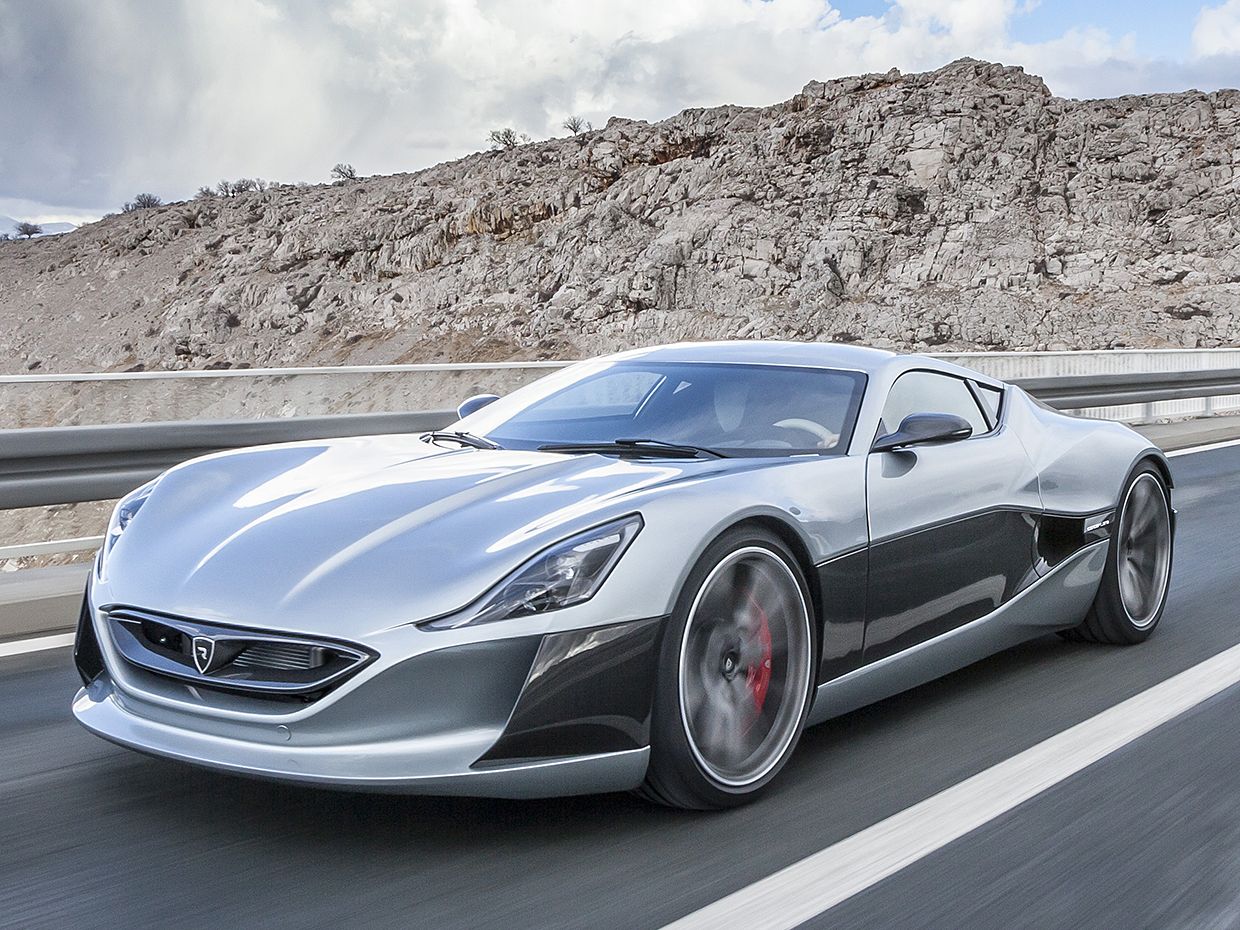2018’s Top 10 Tech Cars: Rimac Concept One
It shows what EVs can do when cost is no object
Tesla has nothing to fear from Rimac. Nor does Porsche, nor any other purveyor of electrified performance. Richard Hammond may be another story: The former “Top Gear” star nearly killed himself by flipping the Rimac Concept One while filming an episode of Amazon’s TV show “The Grand Tour.”
Yet while the Concept One saw just eight copies built (now seven, thanks to Hammond), the US $1.2 million Croatian hypercar showed the awe-inspiring potential of electric performance.
Born from the garage-hobby tinkering of the Croatian engineer Mate Rimac (whose company now numbers 150 employees), the Concept One generates an insane 913 kilowatts (1,224 horsepower) and 1,600 newton meters (1,180 foot-pounds) of torque from four oil-cooled electric motors. With an individual motor, power inverter, and gearbox at each wheel—including two-speed, dual-clutch units at the rear—a torque-vectoring system can speed or slow individual wheels hundreds of times per second, dramatically boosting control and agility. The upshot is a 2.5-second catapult to 60 miles per hour (97 kilometers per hour) and a 354-km/h top speed (210 mph).
ENGINE
913 kilowatts
TOP SPEED
354 km/h
PEAK BATTERY POWER
1 megawatt
Rimac claims that the Concept One’s 8,450 liquid-cooled lithium nickel manganese cobalt oxide cells generate 1 megawatt of power under acceleration, absorb 400 kW under regenerative braking, and store 82 kilowatt-hours. With a dry weight of 1,900 kilograms (4,189 pounds), the Concept One can also travel 350 km (217 miles) on a charge. Unless you flip it over first, of course.
Lawrence Ulrich is an award-winning auto writer and former chief auto critic at The New York Times and The Detroit Free Press.
